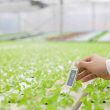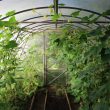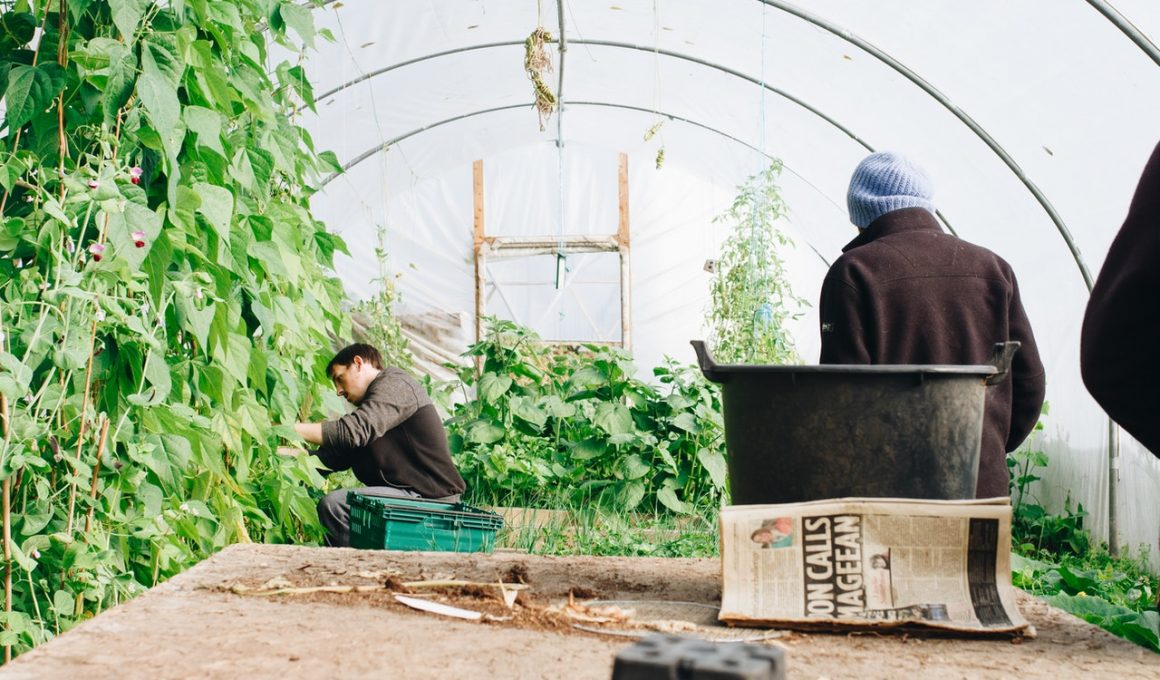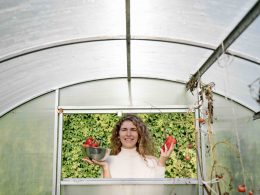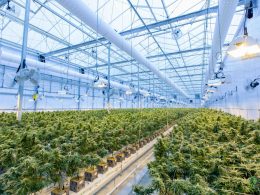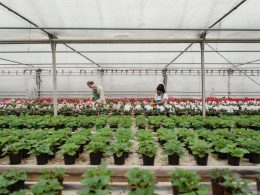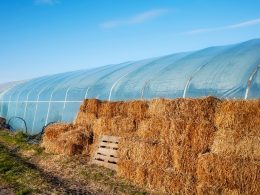Green House Adviser is reader-supported. When you buy through links on our site, we may earn an affiliate commission. Learn more
A greenhouse is a valuable asset to any gardener, whether used to cultivate fruits and vegetables or plants such as trees or flowers. And when it comes to its structure, its roof is probably an essential constituent as it usually specifies how much light is allowed into the greenhouse, which directly impacts the growth of the plants inside.
Therefore, in this guide, we take a closer look at whether a greenhouse roof needs to be clear and what options are available.
Understanding What Kind of Light Plants Need
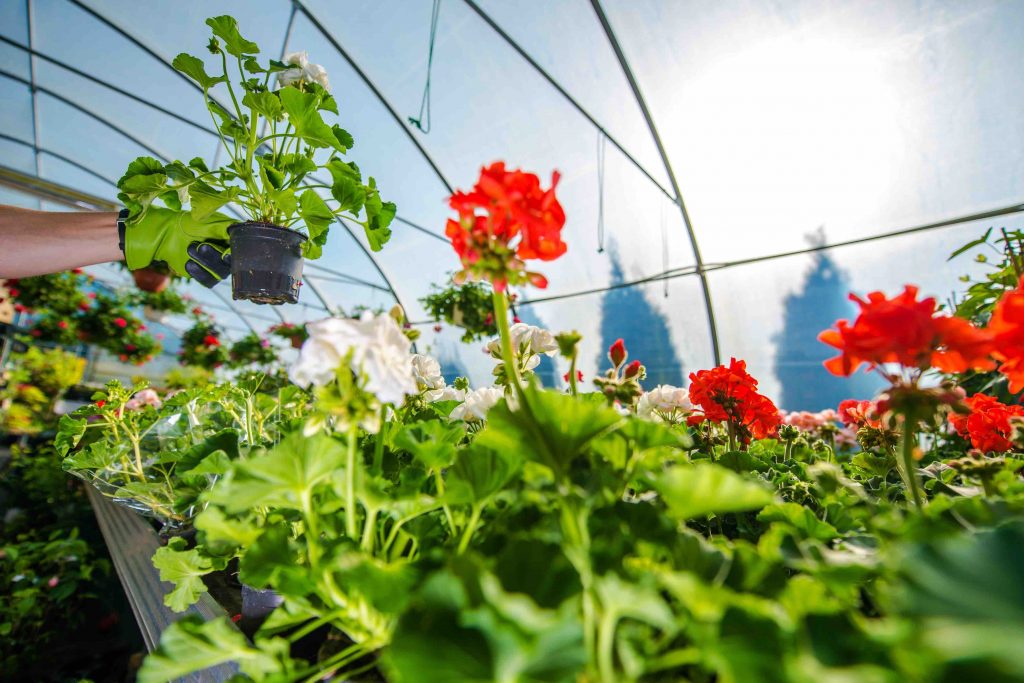
Many growers believe that maximizing all available light is critical to providing optimal growing conditions. However, it is crucial to understand what kind of light different plants need and how light is classified.
Natural light is classified into two types: direct and diffuse. The sun’s direct rays constitute direct light. Diffused light is made up of light waves that have been scattered. When direct light passes through translucent materials (such as glass and some plastics), it becomes diffused light.
Direct light vs. diffused light
The greenhouse’s uniform light distribution enables the production of strong plants without hot patches interfering with their growth. If direct light hits one greenhouse end while the opposite end remains in shadow, inside temperatures rise unevenly. Plants respond best to blue light in the light spectrum; therefore, diffused greenhouse light is essential for optimal growth. Plants can benefit from diffused light. Diffused light will penetrate the plant leaf surfaces more deeply and uniformly. As a result, more leaves can be productive photosynthesis generators.
Diffused light is best for tall crops like tomatoes, cucumbers, roses, and vertical growing. Getting light to the bottom leaves has been demonstrated to enhance vegetable growth. In addition, it can help grow more flowers. Diffused light can also help to reduce scorching, container temperature, fungal spores, and insect propagation.
Does Greenhouse Plastic Need to Be Clear?
When selecting greenhouse plastic, most people often wonder whether they should use clear plastic panels for greenhouses. Clear greenhouse plastic is not essential. A greenhouse plastic can be clear but also opaque. It all depends on the type of plants that will be grown in the greenhouse and how harsh the outside climate is.
The solution to this puzzle is simple. If you intend to use a greenhouse to plant seeds and start plants that will be moved outside, the plastic must be clear because direct sunlight heats the ground and stimulates plant growth. On the other hand, if you want to plant seeds and grow plants in a greenhouse, you should get opaque or frosted plastic that provides diffused light.
Clear plastic vs. opaque plastic
Some greenhouses have clear coverings or panels, whereas others have translucent or opaque covers. Clear plastic roof panels for greenhouse emit direct light, whereas opaque panels emit diffused light.
While it may appear counterintuitive, diffused light is superior for growing plants. Although diffuse light seems to be less bright than direct light, the light that produces the most efficient photosynthesis is not visible to the naked eye. Because diffused light reaches your plants from various angles, plants do not become leggy as they would if they competed for available light. Plants develop a more balanced, compact structure when exposed to diffused lighting.
As mentioned above, if you intend to use a greenhouse for germinating seeds and growing starters that will be transplanted outside, clear plastic sheets for the greenhouse provide whole, direct light to the starter trays. This warms the soil and encourages germinating seeds to sprout and grow into healthy starter plants for transplanting.
However, if you intend to grow your plants to maturity in your greenhouse, a diffused covering will provide even light for balanced foliage growth while also preventing hot spots within the greenhouse.
In other words, clear greenhouses, in general, provide warmer, direct light, which aids seed progression. And greenhouses with diffused coverings are perfect for growing crops over a long period.
Semi-diffused coverings
The semi-diffused cover offers the advantages of both clear and diffused covers to gardeners looking for a dual-purpose greenhouse. The semi-diffused covers provide enough “semi-direct” light for seed propagation in the early spring, and once the starters are planted, the greenhouse can be used to grow full-term crops inside.
The semi-diffused covers make this a multi-purpose greenhouse. Some greenhouse designs incorporate diffused covering on the roof and clear covering on the sides, which provides some advantages for each.
Benefits of a Clear Greenhouse Roof
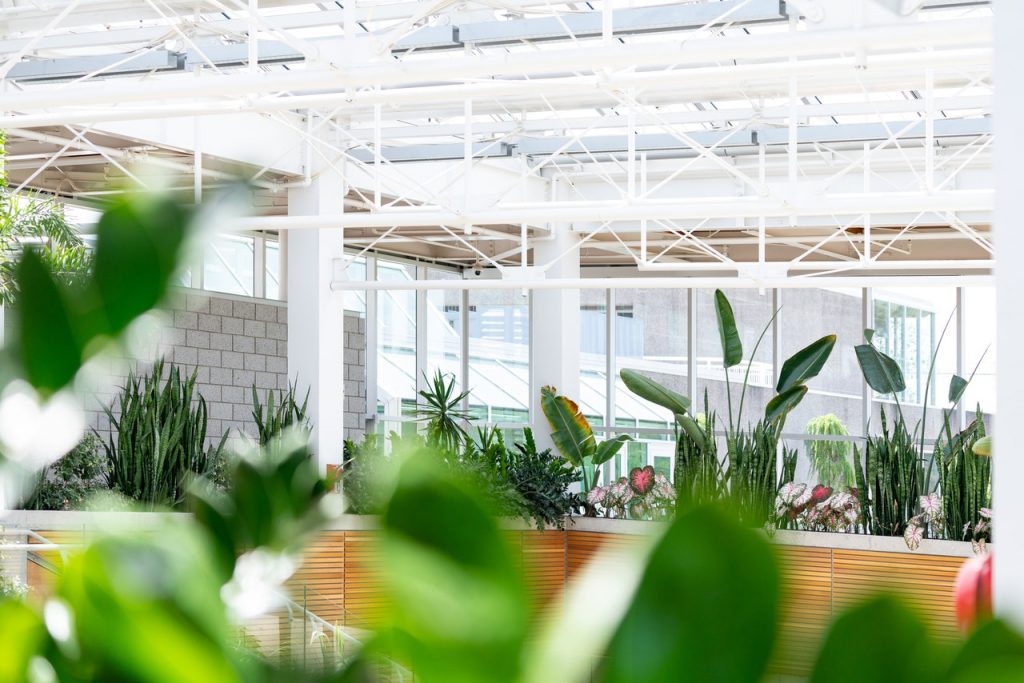
A clear plastic greenhouse roof has several significant advantages. A clear roof lets the most sunshine into the greenhouse while maintaining a regulated atmosphere and offering appropriate protection for the plants inside, especially in cold or constantly gloomy regions of the world. Furthermore, the high amount of sunshine that penetrates through a clear roof efficiently heats the interior of a greenhouse.
To add to the list of benefits, direct sunshine from a clear roof is ideal for growing seedlings since it encourages germination. The greatest environment for swiftly generating plants from seeds is one with high heat and direct sunlight, and enough water. Finally, a clear roof generates a lot of humidity within a greenhouse due to the high heat and direct sunshine. For many plant species, this is the ideal setting.
Benefits of an Opaque Greenhouse Roof
As stated previously, a clear greenhouse roof can be excellent in the appropriate conditions and with the correct plants, but some plants thrive under an opaque greenhouse roof. The following are some of the advantages of having an opaque greenhouse roof.
When using an opaque roof, the light is diffused. As previously said, certain plants require full sunshine, but most plants, particularly food crops, thrive in dispersed sunlight. Direct sunlight can be harmful to plants, whereas diffused sunlight is far safer and less harmful while still allowing the plants to thrive.
Another advantage of opaque greenhouse roofs is that they allow better environmental control. Temperature, humidity, and light levels must all be controlled for successful plant development in a greenhouse.
What Else to Consider When Choosing a Plastic Covering
When searching for the right plastic cover, it’s critical to understand the strength and thickness of the polyethylene film, as well as its structure, number of layers, chemical makeup, and how it meets your needs.
Thickness
There are several greenhouse plastic coverings in today’s market with different amounts of thickness. The thickness of greenhouse plastic covers varies according to the requirements of your project. Greenhouse films are available in thicknesses ranging from 3 to 12 mil. For example, if you live in a windy area or intend to leave your greenhouse up all winter in a snowy place, you may want to consider a thicker material.
Number of layers
When it comes to the number of greenhouse plastic cover layers, they are typically single- and double-layered. A single layer of film is sufficient for typical operation. On the other hand, an inflated double layer is desirable if a grower operates a greenhouse during the heating season. At night, the second layer minimizes heat loss by around 40%. On a windy day, it also lowers stress on the attachments and the rippling of the plastic.
Protection from ultraviolet rays
There are different types of plastic used to build and cover modern greenhouses. UV resistance is one of the most important aspects to consider when selecting a greenhouse plastic.
To protect the plants and plastic within the greenhouse, most greenhouse polymers are designed to deflect UV rays to some extent. Some of the best UV-blocking materials that are used in greenhouses are acrylic, polycarbonate, and polyethylene. However, to better imitate natural growing conditions, certain new polymers are intended to let UV rays through.
Types of Plastic
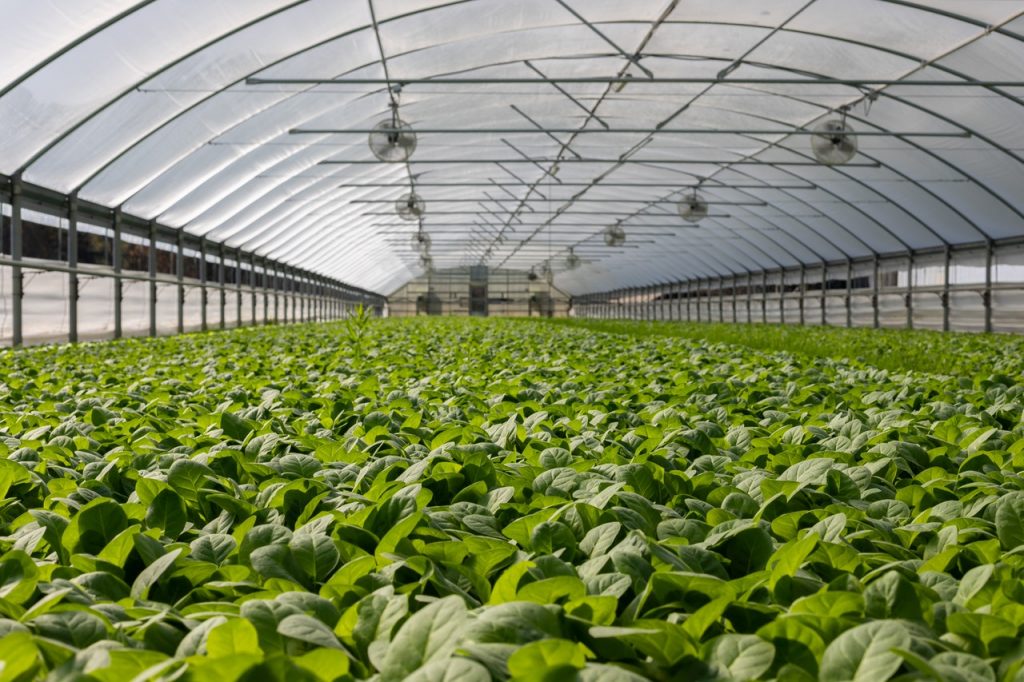
Plastic is an excellent greenhouse material because it allows light to get in while shielding plants from the elements. However, different forms of plastic have their own set of features and advantages. The two most used types of plastics for greenhouses are polyethylene and polycarbonate. These two types of plastics have different properties and are used in different scenarios.
Polycarbonate
Polycarbonate is a strong material that comes in flat or curved plastic panels for use on the sides and tops of greenhouses. Polycarbonate is more pricey than polyethylene, but it has a longer lifespan, typically up to 7 years, and is stronger and more durable. Polycarbonate is almost as clear as glass, but it is not flexible enough to be used on domed greenhouses.
Polyethylene
Polyethylene, or “poly,” is the most prevalent form of plastic for soft-side greenhouses and is used in agricultural, commercial, and home greenhouses. It’s inexpensive and comes in large rolls for attaching to outer greenhouse frames.
While polyethylene film does not provide the same level of protection as rigid plastic panels, punctures and splits are easily repaired. Different kinds of this plastic may incorporate copolymers, which are plastic compounds that provide additional benefits.
Polyethylene film can be used on wood-frame and metal-frame greenhouses; however, PVC-frame greenhouses should be avoided unless the PVC has been primed. When used alone, PVC can deteriorate polyethylene over time.
Conclusion
The roof of a greenhouse is an essential part of the structure and directly impacts how effectively plants grow within. Different roofing designs and materials are ideal for different plants. Whether you choose, clear or opaque greenhouse roofing is up to your preferences and needs. However, make sure it’s appropriate for the amount of sunlight, temperature, and humidity your plants require, and you’ll see how the roof will dramatically impact and boost plant development!
